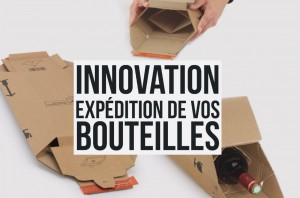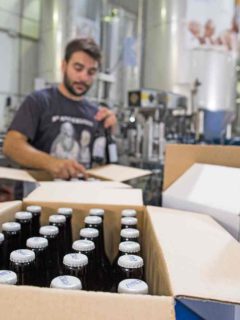Who of you knew about GOOT before reading this article? Continuing our tour of innovative players in the alcohol industry, I had the chance to talk to Olivier Thibert, its founder. He wants to become an essential partner for your local wine shop (among others). Between new consumption trends and innovations, a very interesting interview to share with all those who want local shops to flourish again!
Hello Olivier, it’s a pleasure to meet you. Where did you get the idea to create GOOT?
GOOT is really the result of the iterative work of a team of enthusiasts, in collaboration with all the players in the drinks industry, producers, importers, wholesalers and distributors.
This traditional sector is now fully aware of the changes in consumer trends and the importance of going digital, especially for local retailers.
How do you see (alcohol) consumption trends developing?
There have been two basic trends in the drinks market for some years now:
1. The search for quality
A trend towards premiumisation: some consumers are becoming more demanding and are turning to speciality products in all categories.
This is the case in spirits, as shown by the strong development of the brands marketed by Dugas or La Maison du Whisky, but also in beers with craft and the explosion in the number of artisanal breweries.
As an illustration, a specialised distributor such as Milliet offers more than 1000 references of beer to the CHR (cafés, hotels, restaurants).
2. The demand for almost immediate availability
The second structural trend is the immediacy of consumption. 8 out of 10 bottles are consumed within 24 hours
Consumers are storing less and less, even for traditional products such as wine, as we can see from the success of quality players such as LePetitBallon who have understood this trend.
Worldwide, 8 out of 10 bottles are consumed within 24 hours of purchase! To perfectly address this need, it is therefore necessary to reconcile the proximity of the product with that of the consumer and to operate an efficient and instantaneous logistical link.
How do you see alcohol e-commerce evolving in the coming years?
The Achilles’ heel of alcohol e-commerce is still the cost of delivery and the lack of knowledge of stocks.
Let’s take the example of a case of wine with an average price per bottle of €10 excluding VAT (in supermarkets, the average selling price is €4). This case weighs 10kg, i.e. €6/kg of merchandise, it breaks and is difficult to handle. The wine e-retailer will have to spend an average of €16 excluding VAT to send this package to the customer if he takes charge of delivery, and will generate a gross margin of 25%, before transport, acquisition and of course other operating costs. In this context, it seems difficult for traditional e-retailers to be profitable even with large volumes.
In the drink industry, the weight/price ratios are without comparison with those of traditional e-commerce, so think again of the price/kg of goods and especially of the gross margin on your 300g cashmere jumper!
It is therefore by developing innovative solutions, particularly in logistics and local stocks, that alcohol e-commerce will be able to accelerate its growth and better respond to consumer habits. Local distributors equipped with digital and logistical solutions associated with online players capable of bringing them traffic are in the best position to take advantage of these fundamental trends.
The local retailer has a major asset, offering a strong product variety as close as possible to the final consumer. It must now take the plunge.
As RAJA, we cannot ignore the issue of packaging. How important is packaging in your development?
The quality of the packaging in beverage transport is absolutely essential.
The products sold by our customers are heavy, bulky and brittle…. An equation that requires special attention and, above all, impeccable product quality.
Is Amazon a danger for traditional players or new players in the distribution sector?
Amazon and other marketplaces present tremendous opportunities for traditional players, a real opening towards online sales. The recent partnership between Lavinia and Amazon Prime Now demonstrates the dynamics of local commerce combined with the power of logistics and traffic generation.
With these initiatives, the traditional distribution of alcohol can finally break the great barrier of on-demand and lower stocking levels among consumers.
Finally, what will be your priorities for the end of 2016?
We are continuing to develop our partnerships between local retailers and major brands in order to offer maximum exposure to references through the media channel that is the retailer.

At the same time, we are continuing to improve the service offered to our wine merchant partners by providing them with an ever more complete solution for distributing their selection to the largest number of online players.
















